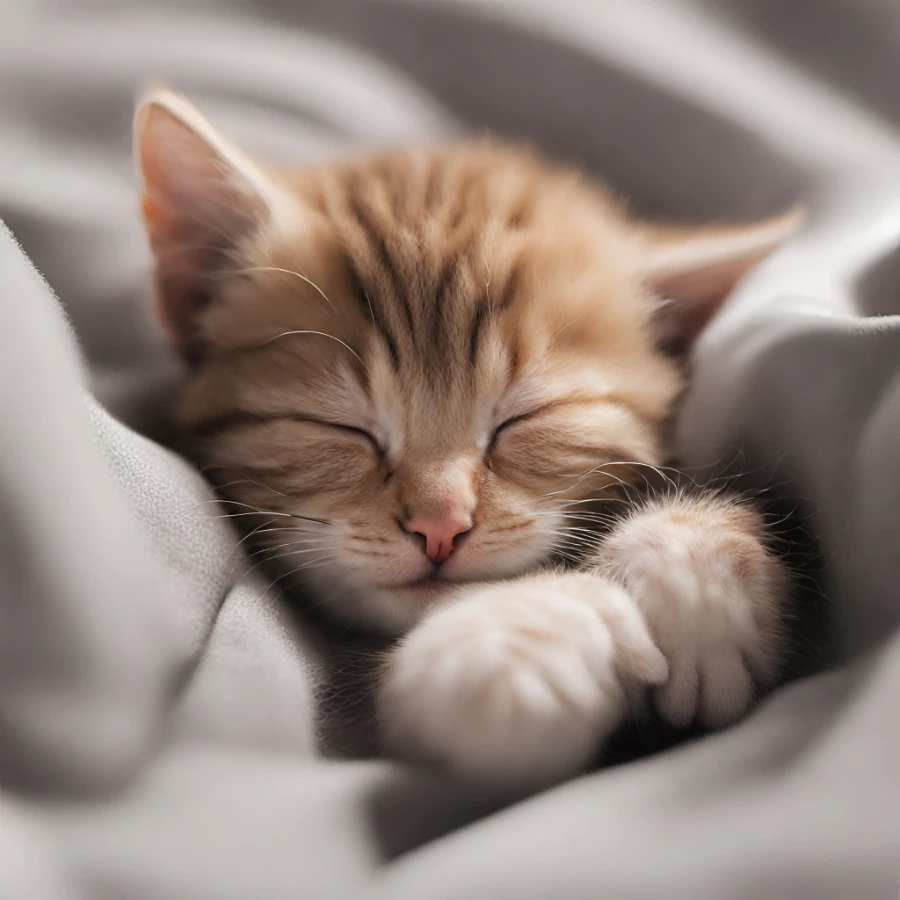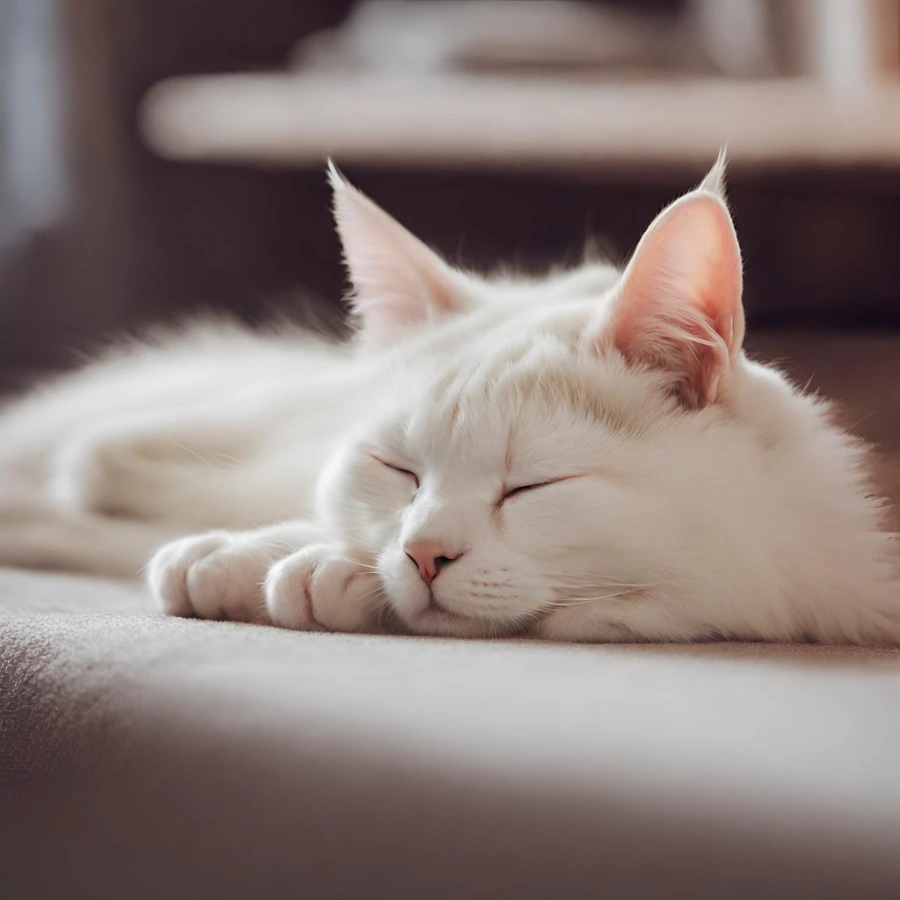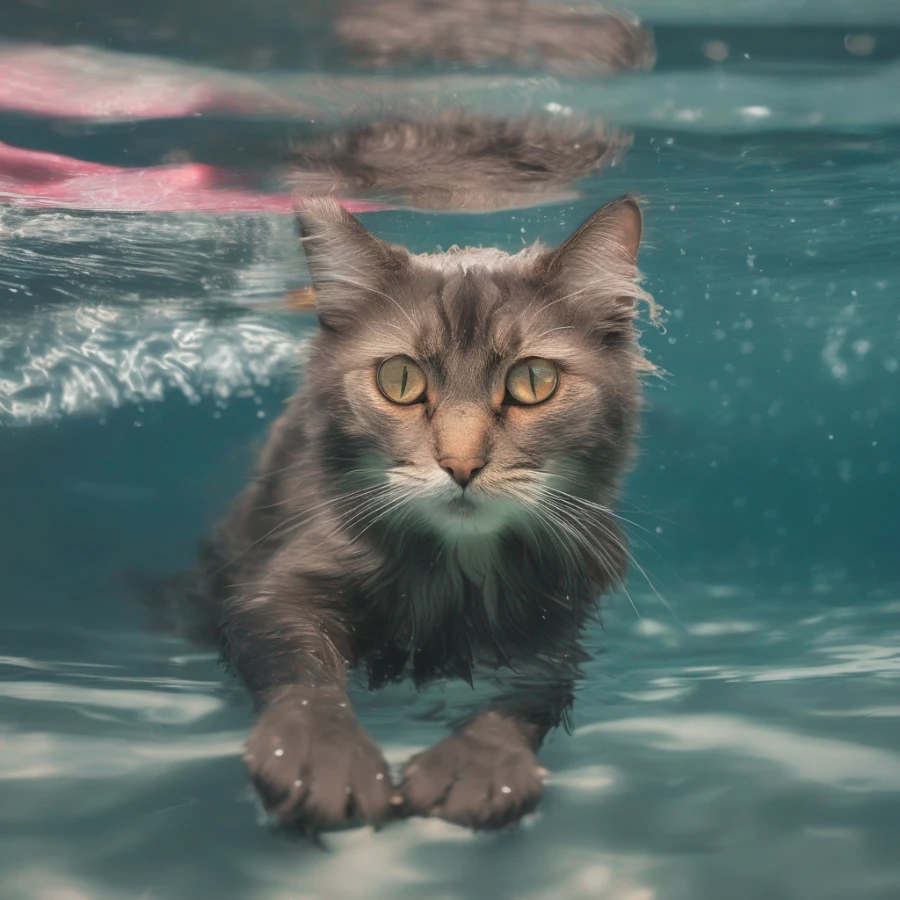Can Cats Sleepwalk? What Every Cat Owner Should Know

Published by: Tatsiana Korshik
Time to Read: 3 Min

Cat lovers worldwide often ponder: Can cats sleepwalk? The answer, in short, is no. Cat sleeping behaviors can appear peculiar from a human standpoint. While we're nestled in our beds, it's not uncommon to hear or see our feline companions prowling about the house.
Cats do not normally sleepwalk. While humans can experience sleepwalking, known as somnambulism, cats do not exhibit this behavior under normal circumstances. Sleepwalking in humans typically occurs during the transition from non-REM to REM sleep, where insufficient levels of the neurotransmitter GABA can lead to movements such as walking while asleep.
In cats, however, the release of GABA during the REM state prevents muscle movements, ensuring that they remain still while dreaming. While cats may paw or twitch slightly during deep sleep, healthy felines do not sleepwalk like humans. The only observed instances of sleepwalking in cats occurred in experiments where cats had surgical lesions on their brains, specifically the locus coeruleus. In these cases, cats exhibited behaviors such as crouching low and acting out hunting or feeding behaviors while in a deep sleep state.
In conclusion, sleepwalking is not a normal behavior for cats and is typically only observed in cases of brain damage, making it a rare occurrence. If your cat displays unusual behavior during sleep, it's best to consult with a veterinarian to ensure their health and well-being.
Sleep is crucial for cats, who spend a significant portion of their time fast asleep and are known for their exceptional sleeping habits. One could argue that cats are masters of self-care, given their adeptness at prioritizing sleep.
Despite common belief, cats are not nocturnal but rather crepuscular. This means they are most active during dawn and dusk, with increased alertness and liveliness during these times. They tend to sleep more deeply either in the middle of the night or the middle of the day. Dawn and dusk are when they are most engaged in hunting and other activities.
Young cats, being more active and expending more energy, require more sleep than adult cats. Kittens, in particular, have bursts of wild activity followed by deep sleep.
Adult cats may engage in minimal activity during their waking hours, conserving energy rather than expanding it, and thus may not require as much rest as younger cats. However, as cats age, their sleep patterns change. Older cats, classified as geriatric, tend to sleep for most of the day, as their sleep requirements increase with age.
On average, cats sleep about 15 hours per day, but the duration and patterns of their sleep can vary depending on the individual. Some cats may need more sleep than others, especially older domesticated cats.
During REM sleep, your cat could be dreaming about various activities, such as a successful hunting mission or events from their day. Cats, being predators, remain alert for much of the day, even when asleep, and can't afford to be in a deep sleep for extended periods. They spend only about 25% of their sleep time in a deep sleep, with the remaining 75% in a light snooze where they can wake up and react to stimuli at any moment.
Cats dream much like humans do, with their hippocampus playing a role in dreaming. This part of their brain is wired similarly to other mammals, and the pattern of electrical activity during sleep is comparable to humans. This suggests that cats experience dreams similarly to humans, likely dreaming about activities or interactions from their waking hours. Pleasant dreams for cats might involve happy memories with you, being fed their favorite food, or enjoying a good belly rub. Negative dreams, on the other hand, could involve scenarios like being chased by another cat or experiencing a traumatic event.
It's essential to note that dreaming is different from sleepwalking. While human brains and cat brains are similar in processing memories and dreaming, cats do not possess the ability to sleepwalk. The neurotransmitter GABA plays a role in preventing muscle movements during REM sleep, ensuring that humans and cats remain still while dreaming. In cats, sleepwalking has only been observed in cases of brain injury, where lesions near the locus coeruleus cause cats to act out their dreams during REM sleep. This suggests that cats dream about activities from their daily lives, such as stalking prey or watching something.
In cats, however, the release of GABA during the REM state prevents muscle movements, ensuring that they remain still while dreaming. While cats may paw or twitch slightly during deep sleep, healthy felines do not sleepwalk like humans. The only observed instances of sleepwalking in cats occurred in experiments where cats had surgical lesions on their brains, specifically the locus coeruleus. In these cases, cats exhibited behaviors such as crouching low and acting out hunting or feeding behaviors while in a deep sleep state.
In conclusion, sleepwalking is not a normal behavior for cats and is typically only observed in cases of brain damage, making it a rare occurrence. If your cat displays unusual behavior during sleep, it's best to consult with a veterinarian to ensure their health and well-being.
How Much Do Cats Sleep?

Sleep is crucial for cats, who spend a significant portion of their time fast asleep and are known for their exceptional sleeping habits. One could argue that cats are masters of self-care, given their adeptness at prioritizing sleep.
Despite common belief, cats are not nocturnal but rather crepuscular. This means they are most active during dawn and dusk, with increased alertness and liveliness during these times. They tend to sleep more deeply either in the middle of the night or the middle of the day. Dawn and dusk are when they are most engaged in hunting and other activities.
Young cats, being more active and expending more energy, require more sleep than adult cats. Kittens, in particular, have bursts of wild activity followed by deep sleep.
Adult cats may engage in minimal activity during their waking hours, conserving energy rather than expanding it, and thus may not require as much rest as younger cats. However, as cats age, their sleep patterns change. Older cats, classified as geriatric, tend to sleep for most of the day, as their sleep requirements increase with age.
On average, cats sleep about 15 hours per day, but the duration and patterns of their sleep can vary depending on the individual. Some cats may need more sleep than others, especially older domesticated cats.
Cat Sleep Stages
Cats, like humans, experience different stages of sleep, classified as REM sleep and non-REM sleep. REM stands for rapid eye movement sleep, during which cats dream. In this deep sleep stage, a cat's body is very relaxed, and large muscles are unable to move. Despite this, some movement is allowed, which explains why you might see your cat twitching or their eyelids flickering while vocalizing in their sleep.During REM sleep, your cat could be dreaming about various activities, such as a successful hunting mission or events from their day. Cats, being predators, remain alert for much of the day, even when asleep, and can't afford to be in a deep sleep for extended periods. They spend only about 25% of their sleep time in a deep sleep, with the remaining 75% in a light snooze where they can wake up and react to stimuli at any moment.
Cats dream much like humans do, with their hippocampus playing a role in dreaming. This part of their brain is wired similarly to other mammals, and the pattern of electrical activity during sleep is comparable to humans. This suggests that cats experience dreams similarly to humans, likely dreaming about activities or interactions from their waking hours. Pleasant dreams for cats might involve happy memories with you, being fed their favorite food, or enjoying a good belly rub. Negative dreams, on the other hand, could involve scenarios like being chased by another cat or experiencing a traumatic event.
It's essential to note that dreaming is different from sleepwalking. While human brains and cat brains are similar in processing memories and dreaming, cats do not possess the ability to sleepwalk. The neurotransmitter GABA plays a role in preventing muscle movements during REM sleep, ensuring that humans and cats remain still while dreaming. In cats, sleepwalking has only been observed in cases of brain injury, where lesions near the locus coeruleus cause cats to act out their dreams during REM sleep. This suggests that cats dream about activities from their daily lives, such as stalking prey or watching something.



